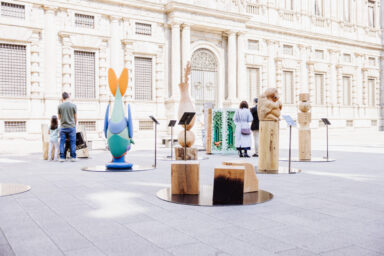Palazzo Reale hosts the extraordinary exhibition “Brassaï. The Eye of Paris” from February 23rd, during Milan Fashion Week (20-26 February 2024). This exceptional event, promoted by the Municipality of Milan and by Palazzo Reale with Silvana Editoriale, represents a unique opportunity to immerse oneself in the fascinating universe of the renowned photographer.
Words Alberto Chiurato-Ranzi
The exhibition, realised in collaboration with the Brassaï Succession Estate and curated by Philippe Ribeyrolles, a renowned scholar and the photographer’s nephew, offers an in-depth and unprecedented insight into Brassaï’s work. Through over 200 vintage prints, sculptures, documents, and objects belonging to the photographer, visitors will have the opportunity to explore Brassaï’s rich legacy, with particular attention to the famous images dedicated to the French capital and its life.

Born in Hungary as Gyula Halász, Brassaï adopted the pseudonym in honor of his hometown, Brassó, becoming an icon of world photography. In close relationship with artists such as Picasso, Dalí, and Matisse, and influenced by the surrealist movement, Brassaï was an integral part of the cultural fervor that characterised Paris from the 1920s onwards. His photographs, ranging from working-class neighbourhoods to symbolic monuments, from fashion to portraits of artist friends, to graffiti and nightlife, have become icons embodying the soul of Paris. Brassaï was one of the first photographers to capture the vibrant atmosphere of nighttime Paris and portray its people: workers, prostitutes, clochards, artists, and solitary wanderers.

In 1933, he published his celebrated volume “Paris de Nuit” (Paris by Night), a fundamental work in the history of French photography. His photographs were also published in the surrealist magazine “Minotaure,” through which Brassaï came into contact with the writers and poets of the surrealist movement.
Philippe Ribeyrolles, curator of the exhibition, states: “To exhibit Brassaï today means to revisit this wonderful work in all its facets, exploring the diversity of his subjects and blending artistic and documentary approaches. It also means immersing oneself in the atmosphere of Montparnasse, a meeting point for artists and writers between the wars, including compatriot André Kertész, who greatly influenced Brassaï and other photographers of the time.”

Brassaï is part of the French “school” of photography defined as humanist, where human presence is central, although reducing his work to this would be limiting. His exploration of Parisian graffiti testifies to his connection with marginal arts and Jean Dubuffet’s art brut. His work was noticed by Edward Steichen, who invited him to exhibit at the Museum of Modern Art (MoMA) in New York in 1956, achieving tremendous success with the exhibition “Language of the Wall. Parisian Graffiti Photographed by Brassaï.”
From February 23rd to June 2nd 2024, Palazzo Reale, Milan


